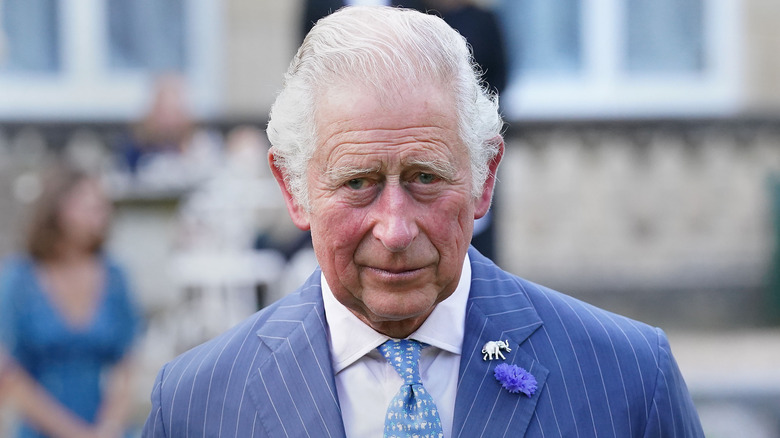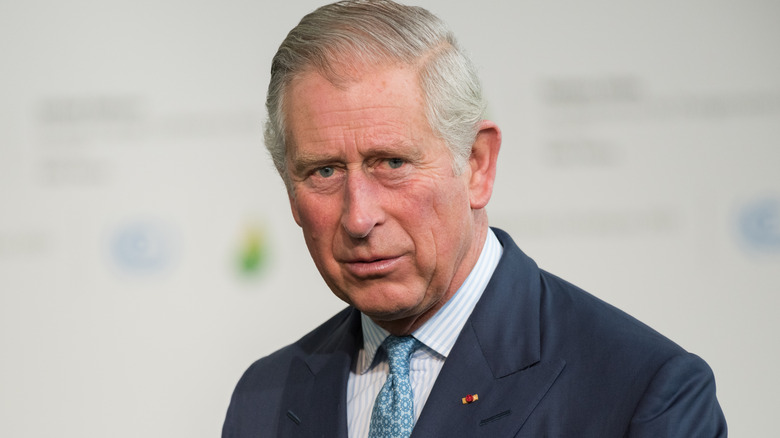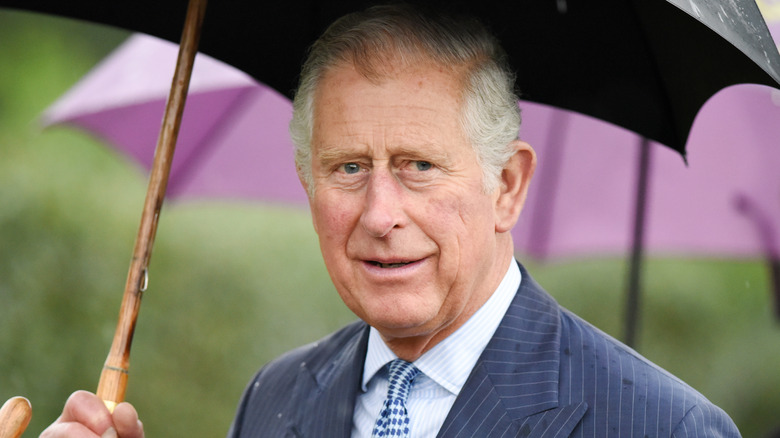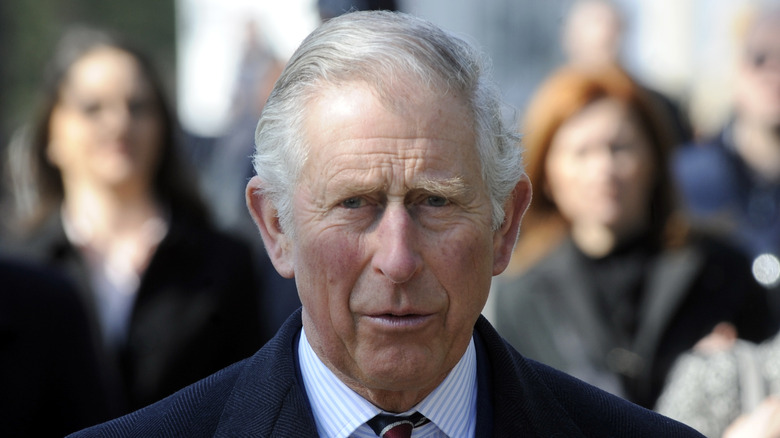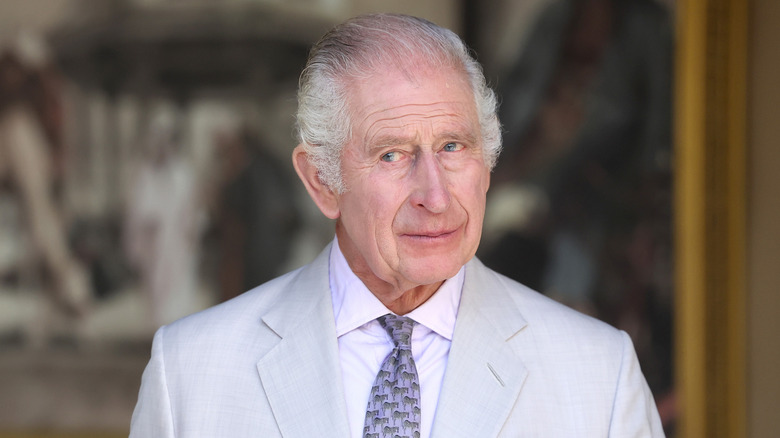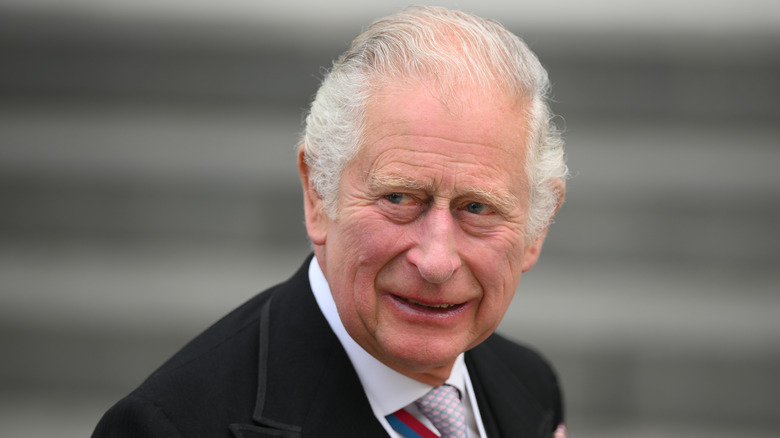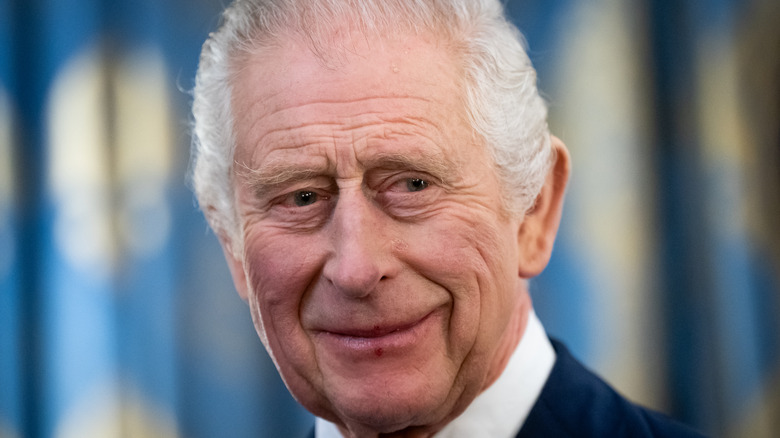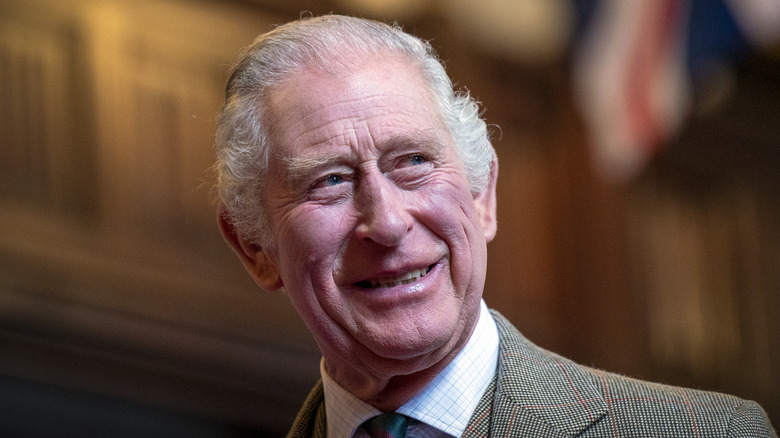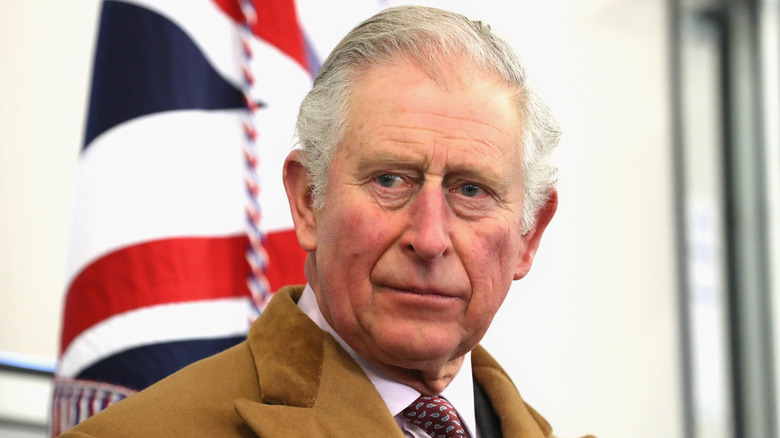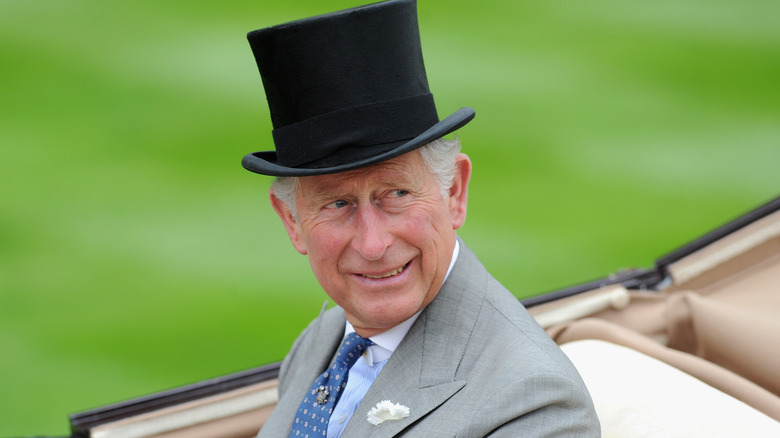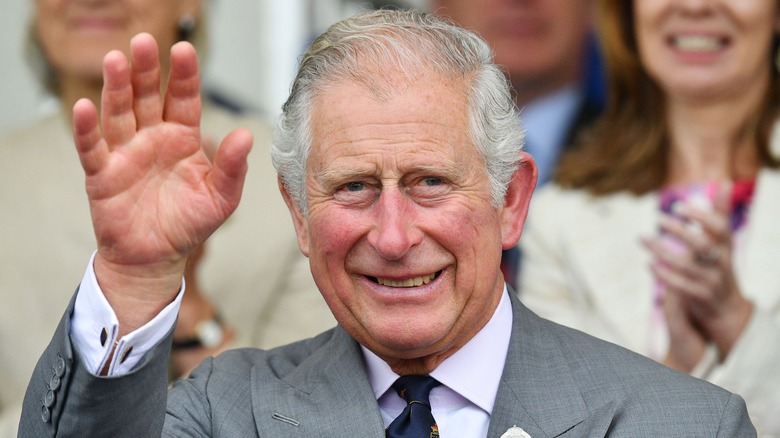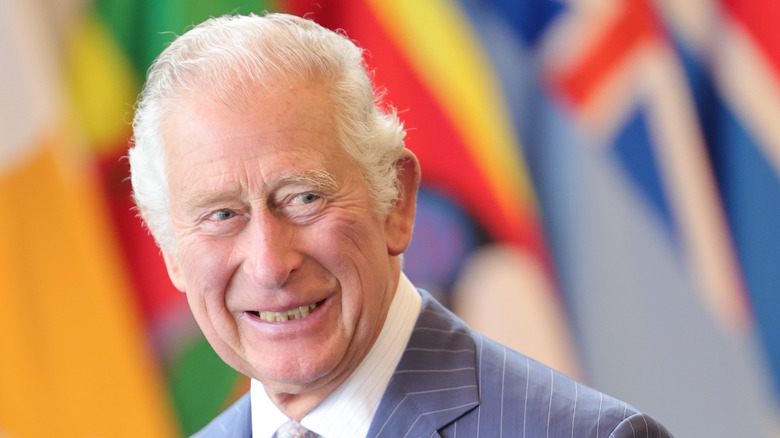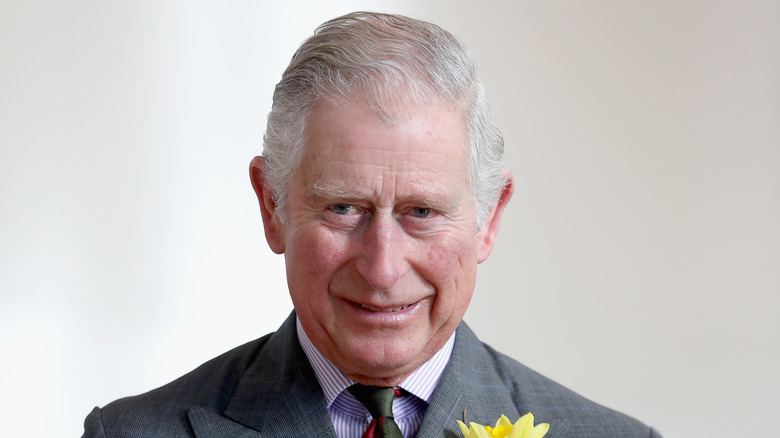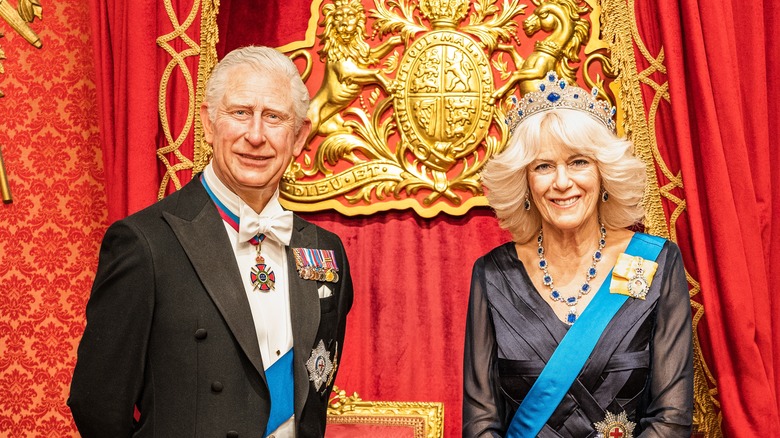How Rich Is King Charles?
Since his birth, King Charles III has gradually built a net worth of over $2.3 billion. The first-born son of the late Queen Elizabeth II and Prince Phillip, Charles was first in line to the British throne, which gave him access to the Duchy of Cornwall, an estate trust that holds numerous properties, royal assets, land, and much more. As the king grew older, his net worth and income continued to soar with new investments and opportunities.
Charles founded Duchy Organic in 1990, and it is now the UK's biggest organic food and drink brand. Through state and private means, King Charles also owns numerous real estate assets, ranging from castles to ancient ruins and even residential properties (yes, the king is essentially a landlord). On formal fronts, he earns money through the Duchy of Lancaster, Sovereign Grant, and the Crown Estate, bringing his estimated yearly income to at least $20 million. The king's monetary situation has changed significantly since ascending the throne in September 2022. But how did he accumulate his wealth over the years?
King Charles was born into Britain's wealthiest family
Born on November 14, 1948, to Princess Elizabeth and Prince Phillip, King Charles was wealthy before he could even walk or talk. As part of the royal family, the king was automatically set up to receive plentiful inheritances through the Crown Estate, similar to his mother's. At the time of Charles' birth, Princess Elizabeth was first in line to inherit the many assets of the Crown Estate through her father, King George VI. Additional assets included Balmoral Castle, Sandringham House, multiple farms, acres of land across the United Kingdom, and a valuable stamp collection.
When King George VI died in 1952, a 25-year-old Elizabeth took over the throne and inherited all of the Crown Estate, which would then be passed down to Charles in the event of her death. Queen Elizabeth reigned for seven decades, and following her death on September 8, 2022, Charles became head of the Commonwealth and inherited property holdings and royal assets worth billions.
The king began earning a hefty income as a child
King Charles was set up to receive the Crown Estate as Queen Elizabeth's firstborn child when she inherited the throne. Realistically, he would not privately own any of the assets until the queen's death, but the wealthy estate was not the only way the king earned money. The royal family's two private estates provide income for the reigning sovereign and the heir. The Duchy of Lancaster, established in 1265, later became a trust for the king or queen that consists of land, properties, and assets fueling an income for the sovereign.
Similarly, the Duchy of Cornwall is a private estate made up of land, commercial properties, homes, and more, set up for the sovereign's heir. When the queen ascended the throne, a three-year-old Charles became heir to the throne and the Duchy of Cornwall. Per The Guardian, the future king earned approximately $265,000 from his estate, which grew as he got older.
An annual royal income of over $20 million
When it comes to public servants and people who hold positions of power in government, income typically takes a spot on the back burner when other matters are more pressing. Before he became regent, King Charles earned an income through public and private means. According to a 2018 report by CNN, Charles and his wife, Queen Camilla, acquired 90% of their income from the Duchy of Cornwall, which made the couple $28 million in profits that year.
In addition to the earnings from the Duchy of Cornwall, Charles received $1.8 million from the Sovereign Grant, which supplies the royal family with 15-25% of the profits earned through the Crown Estate and over $600,000 from other government departments. By March 2022, Charles earned over $26 million through the Duchy. Much of Charles' income is estimated, but with the combined earnings from the Duchy of Lancaster, Sovereign Grant, and other business ventures, the king earns at least $20 million annually.
The controversial Duchies that fuel the king's income
The nature of the Duchies of Lancaster and Cornwall have been fiercely criticized by members of parliament and the general public, especially during Queen Elizabeth's 70-year reign. Over the years, many have asked for transparency regarding how the Duchy funds are used and questioned how much of an income the royals genuinely need. Others have requested that the assets of the Duchies (and their profits) be nationalized to revitalize Britain's economy and put money back in the pockets of citizens.
The Duchies of Lancaster and Cornwall have existed for hundreds of years. Because the majority of the British government remains loyal to tradition, the estate trusts continue to fuel the income of the sovereign and first heir. After Queen Elizabeth died in 2022, Charles automatically became entitled to the Duchy of Lancaster, which was worth $820 million in assets. From those various assets, the king earns the profits of the Duchy through the Privy Purse, which totaled $30 million before taxes in 2022.
He also earns money through taxpayer dollars
The Duchy of Lancaster primarily funds King Charles's income, but he does have a few additional means of making money. The Sovereign Grant, which replaced the Civil List in 2012, is an annual allowance to the royal family funded by the government to cover expenses linked to official duties, ranging from security to maintaining numerous royal properties.
The Grant is calculated based on the profits the Crown Estate generates yearly. According to BBC, the profits from the Crown Estate go to the Treasury, which is then used to estimate the amount of money the Royal Family should receive from the government. Previously, the Sovereign Grant was worth 15% of the Crown Estate. However, the number has increased to 25% in recent years based on factors like inflation and, most recently, the Buckingham Palace repairs, which had a $514 million budget.
The Crown Estate also boosts his wealth
Arguably, King Charles' most valuable and lucrative asset is the Crown Estate. The Estate, worth a whopping $19 billion, is a collection of land and property that the reigning monarch possesses but does not privately own. The Estate is managed through a board of directors, and the revenue earned from it is given to the Treasury in exchange for the Sovereign Grant, an agreement that traces back to the 1700s. The earnings from the Estate, through the Sovereign Grant, are divided, with 10% allocated to maintain Buckingham Palace and 15% allocated to fund royal travel, formal events, and even payroll for royal employees. In the 2022 fiscal year, the Sovereign Grant reached over $108 million.
The Crown Estate's portfolio of land, properties, and assets has been passed on through generations but has also grown through the personal investments of Queen Elizabeth. It consists of 190,000 acres of rural land, which includes shoreline, seabed, forests, and farms across Great Britain. In addition to the thousands of acres of land, Ascot Racecourse and Regent Street, London's main shopping district, are part of the Estate.
The king has gotten away with not paying taxes on certain assets
It is no secret that after the death of Queen Elizabeth, King Charles inherited her assets, which included the personal property, jewels, paintings, land, farms, and royal estates of the late monarch. Per Forbes, the vast collection of assets is worth $46 billion, and the king has not paid a pound of tax on all he has inherited. Unlike the citizens of the UK, who are subject to paying a 40% inheritance tax on any part of an estate valued over $374,000, the king is exempt from paying due to a 1993 agreement between the royal family and former Prime Minister John Majors.
The agreement states that any assets passed from "sovereign to sovereign," including the Crown Estate and the Duchy of Lancaster, are tax-free to maintain "a degree of financial independence from the government of the day," according to The Guardian. In addition to the king's inheritance being tax-free, as sovereign, he is not legally required to pay income tax or capital gains tax. Like his late mother, Queen Elizabeth, however, King Charles voluntarily pays 45% of his earnings in income tax.
A net worth of nearly $2.3 billion
Given the value of the Crown Estate and Duchy of Lancaster, it is no surprise that King Charles has an approximate net worth of $2.3 billion. In addition to the assets owned "in right of the Crown," the king also holds several private assets contributing to his high net worth. These include a costly car collection, seven estates and hundreds of rental properties, thoroughbred horses inherited from Queen Elizabeth, private jewels, the royal philatelic stamp collection, investments, and various pieces of art from artists like Marc Chagall and Salvador Dalí.
The total valuation of assets owned by the king is complicated to determine because some details, like the royal family's shares and investments, have mainly been kept private. However, outside of investments and stock shares, much of the earnings and value of Charles' many assets have been shared with the public. His car collection is worth an estimated $8 million, the Queen's horses are worth a collective $34 million, and the royal stamp collection is valued at $125 million. These assets are small compared to the $675 million private jewel collection, the $870 million Duchy of Lancaster, and the estates of Balmoral and Sandringham, worth a combined $415 million.
A lot of money is spent on royal expenses
It is indisputable that King Charles makes a very generous income as sovereign. However, Charles doesn't pocket all of the money he earns as a royal; instead, much of it goes toward operating the multi-faceted machine that is the royal family. Approximately 25% of the Sovereign Grant is spent on royal duties, with 10% put towards maintaining Buckingham Palace and other royal estates. In comparison, the remaining 15% is allocated for royal travel, formal events, security, and staff.
According to The Standard, the monarchy spent approximately $136 million in the 2022-2023 fiscal year, making the cost per UK citizen $1.64. The money was put towards various expenses, from the king's two-day 32,000-pound royal train ride to 179 helicopter rides, with a price tag of one million pounds. Other expenditures included conducting foreign tours, repairing Buckingham Palace, and paying 500 royal staff members.
King Charles owns over seven palaces and 300 more residential properties
Long before King Charles ascended the throne, he earned money from the various estates in the Duchy of Cornwall and the properties he privately owned. After the death of Queen Elizabeth, he became entitled to the Duchy of Lancaster and inherited many of the late queen's homes, significantly increasing his wealth. According to Forbes, the king owns an astonishing seven palaces, 10 castles, 12 homes, 56 cottages, 14 ancient ruins, and over 300 residential properties across England, Wales, Scotland, and Romania.
Among the King's many properties are the inherited Balmoral Castle and Sandringham House, which belonged to Queen Elizabeth. Balmoral Castle, tucked in Aberdeenshire, Scotland, became known as one of the queen's favorite places. The estate itself spans 50,000 acres and is worth $118 million. Located in Norfolk, Sandringham House has an estimated worth of $73 million, with the queen's prized thoroughbred horse farm on the property. In addition to his inherited estates and privately owned homes, the king also owns 300 residential properties in the Norfolk area, collectively worth approximately $94 million.
His expensive car collection is worth $15 million
When King Charles isn't busy carrying out his many royal responsibilities, he spends his time engaging in hobbies, like collecting vintage cars. The king's car collection has pieces either gifted to him or inherited from his mother, Queen Elizabeth, and is worth approximately $15 million. The queen owned some of the cars that make up the royal collection.
The very rare 1950 Rolls-Royce Phantom IV, bought by Queen Elizabeth and Prince Phillip before she ascended the throne, is now worth nearly $3 million. A 1965 Aston Martin DB6 Volante, which the king was gifted for his 21st birthday, has a value of $1.2 million. Other cars in the king's pricey collection include a 1962 Rolls-Royce Phantom V, a 1977 Rolls-Royce Phantom VI gifted to the queen for her Silver Jubilee, and the Bentley State Limousine, among others.
The king is known for his philanthropic and charitable efforts
Aside from the formal duties that come with being a royal, King Charles spends a significant amount of time and energy advocating for different charitable causes through the King's Trust. Formerly known as The Prince's Trust, he founded the trust in 1976 with the goal of giving disadvantaged youth better opportunities to succeed through educational and employment programs, according to the official royal family website. "We believe that every young person should have the chance to succeed, no matter their background or the challenges they are facing," the Prince's Trust website reads. In the nearly five decades since the king launched the charity, he has helped over 1 million people find their way to school or employment, including actors Idris Elba and Daniel Oyelowo.
In addition to the King Trust, King Charles is the head of two other foundations: the King Charles III Charitable Fund and the King's Foundation, which seeks to help communities adopt sustainable practices for a better future. The King frequently and consistently donates to several charitable causes and foundations focusing on environmental sustainability and social inclusion, including Plantlife International, Practical Action, The Wildlife Trusts, Age Scotland, and more.
He has been married twice and is the father of two princes
Arguably, King Charles is most known for his marriage to the late Princess Diana and Queen Camilla. Just a few months after their swift engagement in February 1981, King Charles and Princess Diana wed in a highly publicized ceremony on July 29, 1981. The king and Princess Diana had two children: Prince William (born 1982) and Prince Harry (born 1984). Despite appearing to be the picture-perfect couple on the outside, the couple's marriage was crumbling behind the scenes. In a revelation that shocked the world, the king and Princess Diana separated in December 1992, with the divorce being finalized in August 1996. The couple agreed on a divorce settlement that required Charles to pay the late Princess a lump sum of between $22 million and $27 million in addition to $600,000 yearly to run her private office. Following the divorce, the king and Queen Camilla made their relationship public, and they married in April 2005.
Being born into the Royal Family, both Prince William and Prince Harry also have tremendous wealth. With Prince William as heir to the throne, he inherited the Duchy of Cornwall after King Charles ascended the throne, which earns approximately $20 million annually. Since leaving his royal status behind after marrying Meghan, Duchess of Sussex, Prince Harry has also had lucrative opportunities, including a $150 Netflix deal and a $59 million book deal.

